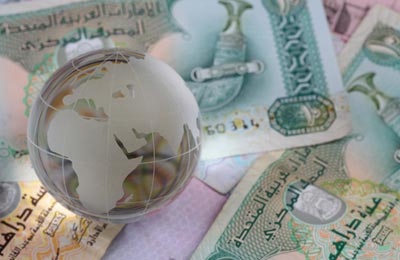
UAE non-oil growth seen at 3-4pc in 2012
Kuwait, August 21, 2012
UAE’s non-oil growth is likely to continue at a below-trend pace of 3 to 4 per cent for the next couple of years, said the latest GCC Brief issued by the National Bank of Kuwait.
Data for the first quarter of 2012 – including on credit, real estate transactions and the PMI survey of private sector firms – were positive, the report added.
But these may overstate the underlying pace of improvement. Activity is typically stronger early in the year before easing back in the summer.
Although gradually recovering, the economy will be held back by concerns over the restructuring and refinancing of Dubai Inc. debt, and ongoing fiscal consolidation. With its strong trade and transport links, the UAE is also more heavily exposed than its neighbors to any global economic turmoil.
IMF estimates suggest that UAE government-related entities (GREs) still have some $185 billion (51 per cent of GDP) of debt outstanding, with repayments and redemptions of $25-30 billion (7-8 per cent of GDP) due in each of the next 3 years.
This heavy financing schedule leaves GREs reliant upon favorable capital market conditions and decent economic growth to shore-up cash flows and asset values. Given the uncertain global outlook, these are not guaranteed. Even if the world economy avoids a big downturn, continued consolidation and deleveraging at GREs is likely to remain a drag on UAE growth for the foreseeable future.
The hydrocarbon sector output is forecast to rise 3 per cent in 2012 and level-off in 2013, as oil prices remain close to $100 per barrel and Gulf Opec members seek to guard against potential supply disruptions elsewhere.
This will leave crude oil output close to its maximum potential of 2.7 million barrels per day (bpd), though capacity is scheduled to rise to 3.5 million bpd over the next few years. Overall real GDP growth is seen at 3.3 per cent this year, down from 4.9 per cent in 2011.
Inflation will likely remain amongst the lowest in the region. Consumer price inflation has been below 1 per cent since mid-2011, and averaged 0.7 per cent in the first 4 months of 2012. Excluding food, inflation would have been negative, at -0.6 per cent, for the same period in 2012.
The rate of decline in housing rents has recently shown signs of bottoming out, but with the oversupply in residential property expected to persist, a rebound in rents looks unlikely. Moderate economic growth, weak credit conditions growth and softer global food prices should see inflation average 2.0 per cent or below this year and next.
Government spending is estimated to have increased 19 per cent in 2011 thanks partly to higher loans and equity outlays – likely linked to the Abu Dhabi government’s assistance to local corporates.
Nevertheless, with oil prices and production high, the budget balance improved, registering its first surplus for 3 years at 3 per cent of GDP. Slightly larger surpluses are seen this year and next, as bailout expenses decline and the authorities seek to rationalize current and project spending where possible.
Meanwhile, the slight dip in oil prices combined with rising imports could see the current account surplus shrink from 7 per cent of GDP this year to 2 per cent of GDP in 2013. – TradeArabia News Service







